Walker Tavern Complex at Cambridge Junction Historic State Park
Introduction
Text-to-speech Audio
Images
Pitstop! Long days, dusty paths, and hungry passengers. On the route from Chicago, Illinois, to Detroit, Michigan, the Walker Tavern was a welcome pitstop on a long journey. From footpaths, to railroads, to highway systems, Michigan’s Irish Hills evolved with the times. Travelers could stop at Walker Tavern for a bite to eat, and to rest before they continued a five-day journey. This1900 Michigan map makes it clear just how daunting these travels could be!
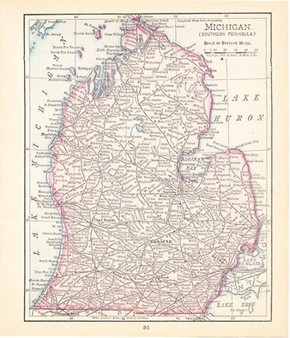
Empty Bowls at Empty Tables- This ceramic bowl was uncovered during the 1968 archaeological dig at Walker Tavern. The pattern reflects an era when the Tavern served as a stop for dining. With the growth of US highways in the 1920s, overnight guests dwindled, and so did the soups once served from this decorative dishware.
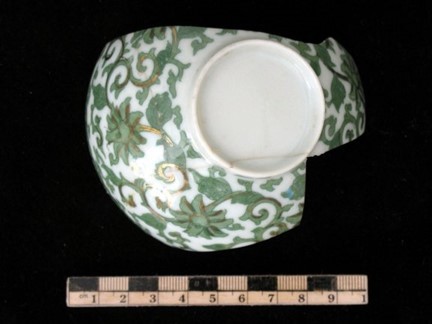
Too Good To Pass Up- A home-cooked meal and a tall drink: there was no sweeter site to weary travelers than the comforts that the Walker Tavern could provide. The 1968 archaeological dig at the site unearthed many ceramic remains, like these plate fragments. With no way to easily travel with snacks in toe, Michigan travelers of the 1800s would not dare pass up a chance to dine at the Tavern, and clean their plates in preparation for their continued journeys.
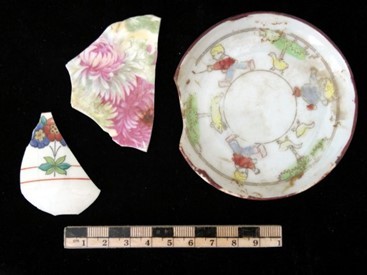
Refreshed- Along with the typical set of dishware which included bowls and plates, Tavern guests could also quench their thirst by pulling up a bar stool or ordering a pitcher for their table. Lone travelers, couples, and families alike could all rely on Walker Tavern to keep them refreshed. Once highway systems began to creep into the Irish Hills, refreshments were more likely found in the cars of day trippers, than at the Walker Tavern bar top.
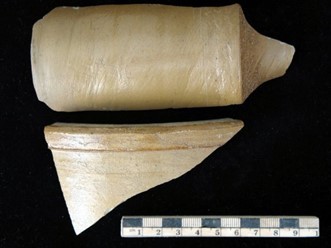
The Perfect Scene- A stocked bar, a crackling fire, and a place to take a seat. This 1972 postcard of the Walker Tavern Bar Room reflects the 19th century atmosphere. A place to dine was at first a welcome comfort, but with the growth of the auto industry and the US highway system in the 1920s, there became no reason to stop. Travelers were less focused on the journey, and instead turned to travel as a luxury of entertainment.
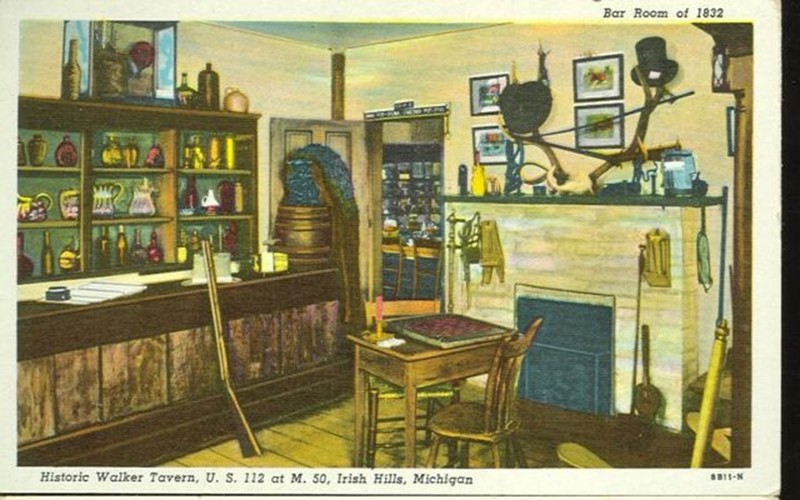
Anxious Guests- The cries of anxious babies, the dragging feet of exhausted mothers and fathers, and still the certain sense of comfort: all found at Walker Tavern in the 1800s. People of all walks of life could find comfort in the food, drink, and hospitality they enjoyed at the pit-stop on their 5-day journey. While mothers and fathers dined with decorative ceramic ware, babies of course found comfort in bottles much like this one, uncovered in the 1968 archaeological dig at the site. With the development of US highways, the Tavern saw less baby bottles, and instead those bottles remained in the cars of day-travelers who simply sped past Walker Tavern on their way to the family-attractions which lined the roads of the Irish Hills.
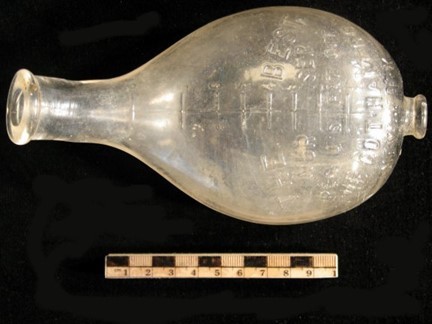
The Price of Comfort- Toss a quarter down on the bar top, and you’ve got a room for the night. A range of coins have been unearthed during archaeological digs at Walker Tavern, from pennies, to nickels, and quarters. Travelers once stopped and paid a small price to enjoy the comforts of a room and hearty food at the Tavern. By the 1960s, meals were eaten in the cars of anxious day trippers, on their way to a glamorous new roadside attraction. The boom of the US highway system meant that the Tavern quickly became a site of antiquated notions of pause amidst a bustling new world.
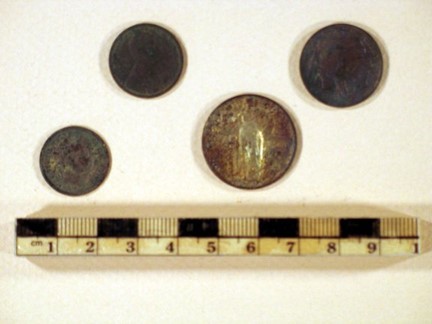
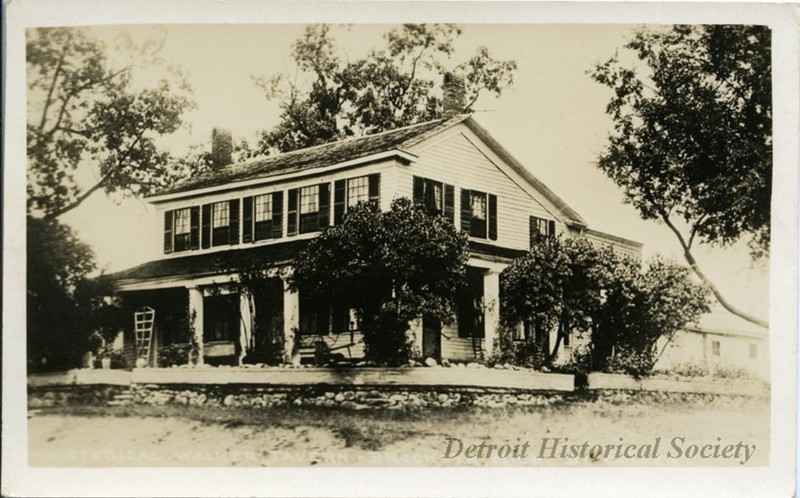
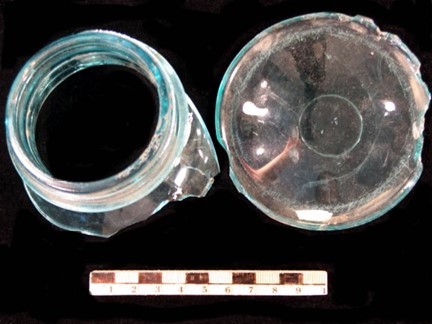
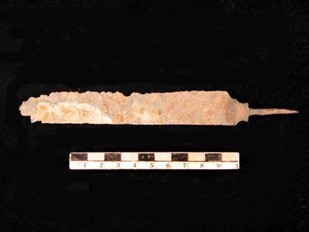
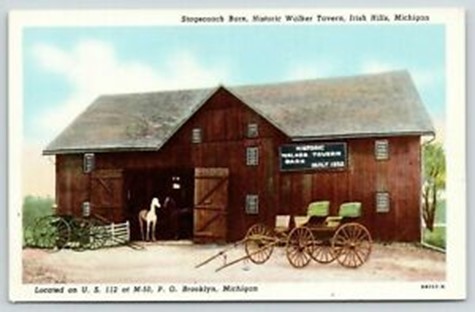
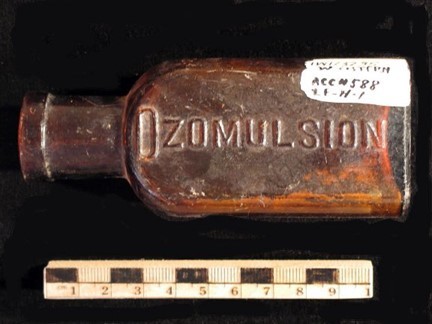
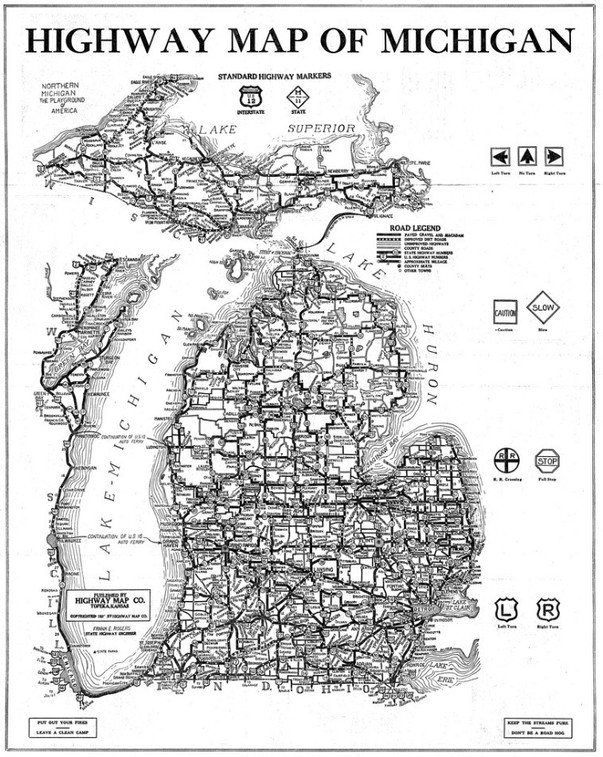

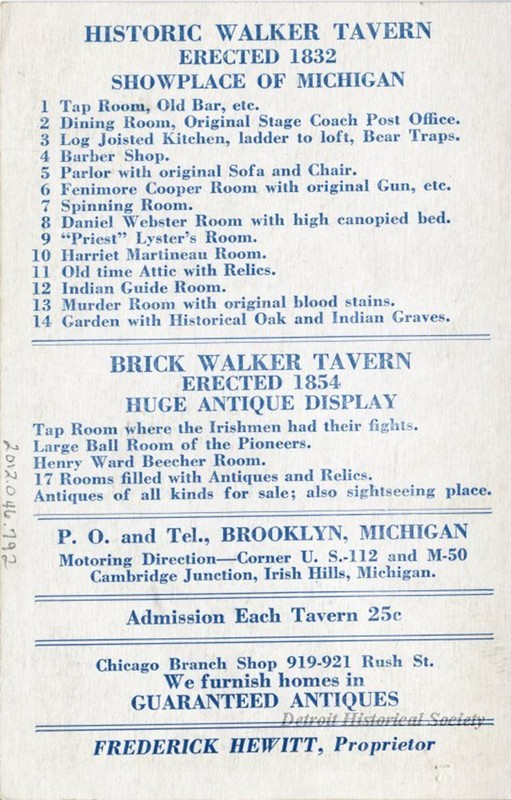
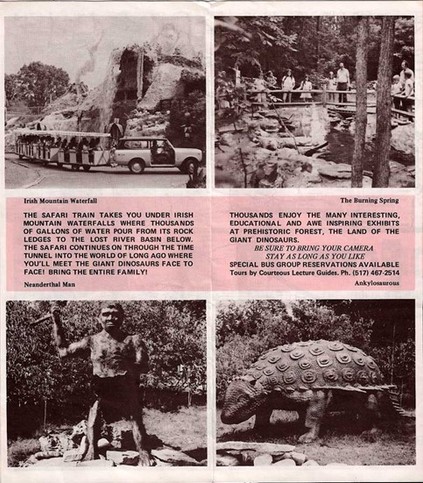
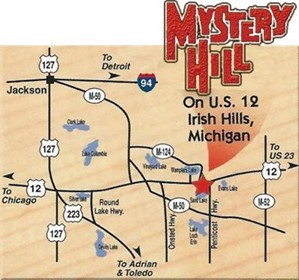
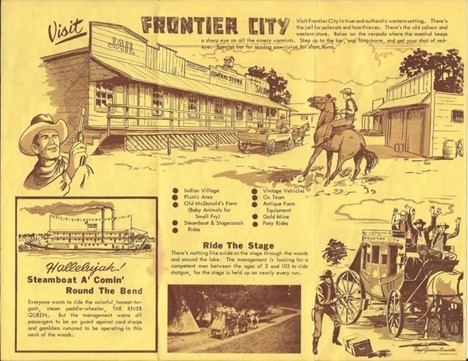
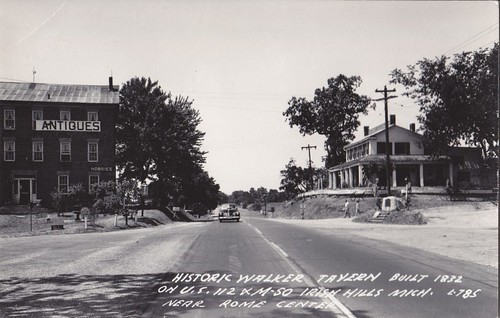
Backstory and Context
Text-to-speech Audio
The Walker tavern is part of the buildings which makeup the Cambridge Junction Historic State Park, owned by the Michigan Department of Natural Resources. The original wooden structure Walker Tavern was built in 1832, and marked an important intersection on the route between Chicago, Illinois, and Detroit, Michigan (1). At Walker Tavern, two major US roadways converged: Chicago Road (US 12), and Monroe Pike (M50). In the 1800s, it would take settlers roughly five days to make this complete journey, and they found the hospitality at Walker Tavern to be a welcome stop along their extended journey. For decades, the comforts of the roadside inn and tavern was a welcome sight to weary travelers, but with the growth of the US highway system, change was inevitable in the Irish Hills. Where the Walker Tavern was once a place of rest and comfort, roadside tourism blossomed in the area, and people became more interested in the theme parks and stops along the side of new highways.
Among the popular roadside stops were the infamous, Frontier City, Prehistoric Forest, and Mystery Hill. Frontier City opened in 1960, and was a one-stop shop for all fans of the American Western aesthetic (2).The City featured classic Western buildings like a bank, and general store, as well as Western music, and themed events for the whole family. In 1963, Prehistoric Forest followed suit, appealing to a vast dinosaur enthralled audience. Families could take a train ride through the forest, brave the waterslide, or take a dangerous walk through dinosaurs across the property. Finally, Mystery Hill was on the map with varying names and sources of attraction between the 1930s and 1960s. Here, guests could experience the gravity-defying thrills of the mysterious location. While each of these modern roadside attractions were not without their own rises and falls in popularity, they represent a category of attractions that flourished due to the development of the US highway system, marking a shift in the historical narrative surrounding the Walker Tavern from one of necessity, to one of luxury.
The Federal Aid Road Act of 1916 was just the beginning of American road systems (3).The government project saw the implementation of roads that were pre-existing routes of travel across the nation. Just ten years later, in 1926, Michigan highway US12 took shape and marked the route throughout the Irish Hills. Walker Tavern enjoyed nearly 100 years of guests stopping at their corner, before the implementation of US12 changed roadside tourism forever. The concept of roadside tourism was born out the new consumer boom of the 1920s (4). Fresh off of World War I, Americans had a newfound sense of vibrancy and optimism, and markets across the nation knew just how to appeal this new customer: entertainment. For decades, travel was simply a means of getting from one place to another, and any stops along the way were borne out of necessity and exhaustion. Instead, the 1920s proved an all-new combination of the popularity of automotives, and the development of entertainment everywhere one goes. Thus, roadside tourism entered the scene. Michigan’s Irish Hills quickly took advantage of the highly traveled US12, and the region instantly became known for it’s entertainment stops along the road.
Mystery Hill opened to customers in 1930. A must-see phenomenon with no gravitational forces drew crowds of curious travelers. Located just off the side of US12, Mystery Hill boasted an easily accessible stop that could jam-pack endless family fun into a short amount of time(5). It was crucial that roadside stops like this marketed themselves as day trip locations, or as quick stops of fun along a longer journey. After all, the whole appeal of the new age was instant entertainment, and there was no longer an attraction to spending days on the road with nightly stops at local inns. Why waste so much time traveling, when a day trip could bring instant family fun! Following suit, Frontier City opened in 1960, and the village transported guests to a popular American era: the wild west. Particularly appealing to families with children, the stop boasted regular performances, interactive tours, and old-fashioned shops that proved the perfect day trip for families on the road. Prehistoric Forest joined the US12 lineup in 1963, and the larger than life displays begged families to stop, as they could see the fun that awaited them from the road.
In an ironic nod to the evolution of road systems throughout the country, each of these once trendy, modern roadside stops felt the tables turn during the late 1960s, as National Interstates began to replace statewide roadways. Though the Federal Aid Highway Act was implemented in 1956, the effects of these changes did not start to reach the Irish Hills until some years later, and by 1974 Frontier City had closed it’s saloon doors(6). By 2002, Prehistoric Forest closed, and Mystery Hill is the only roadside attraction borne out of the new consumer boom that remains open today. Just as these sites once replaced Walker Tavern, they themselves were replaced with attractions like the Michigan International Speedway, and popular scenic parks by the early 1970s.
By studying archaeological and historical evidence related to Walker Tavern, a clear picture of changing times can be uncovered. Early travelers came by foot and stagecoach to the Walker Tavern, as a necessary stop along their five-day journey. Then, when pathways were paved and statewide road systems entered the picture in the 1920s, the Tavern saw fewer visitors, and neighboring roadside tourist attractions caught the eye of new consumers instead. By the 1970s, a new age once again caught up with the Irish Hills, as international highway systems brought less traffic directly through the area, and travelers were instead drawn to larger, well-renowned spots like Michigan International Speedway. While the fluctuation in popularity of these roadside stops varies, each era shares one thing in common: each was fueled by the current state of the road system in the area.
The accompanying images and captions of this entry correspond to the following sub-categories: Dining, Lodging, Travelers, and Roadside Tourism.
Dining
Walker Tavern served as an important pitstop for travelers across southeastern Michigan. Since it’s construction in 1832, the site has served as a dining stop, a lodging stop, and then a historic stop. Guests with big appetites and low energy could stop into Walker Tavern, and leave feeling filled with energy to continue their journey. The function of dining was an important part of Tavern operations, and through an analysis of archaeological discoveries and photographic evidence, the function of serving food and drink becomes a clearly important qualification of Walker Tavern as a pitstop.
Lodging
Just as Walker Tavern served an important role in feeding weary travelers, it was also a place to rest tired eyes and anxious minds. The lodging aspect of the site was a key factor in making it a popular resting ground for travelers along the Detroit to Chicago route. From dining to lodging, artifacts and images related to Walker Tavern, paint a clear picture of comfortable shelter and welcome rest.
Travelers
While there are few historical records to indicate whom exactly stopped at Walker Tavern, evidence suggests that guests included those from all walks of life. In order to more clearly see the variety of guests that the site served, we can turn to historical and archaeological evidence.
Roadside Tourism
Walker Tavern was a common pitstop on the route between Detroit and Chicago, primarily due to it’s location at that intersection. It was also popular largely due to the necessities of the era. Travelers needed to stop, to eat, and to rest for any period of time, as the journeys they made were arduous and trying. However, as the years passed, the post-World War I consumer boom was reflected in the growth of the US highway system, and new interests in luxury and entertainment. People began to travel, simply as a means of entertainment, rather than a means of necessity, and thus the prosperity of Walker Tavern dwindled. Roadside tourism flourished in Michigan’s Irish Hills, as the popular US 12 was home to Prehistoric Forest, Frontier City, Mystery Hill, and many other entertainment stops. People came by the hundreds to visit these easily accessible, and instantly gratifying sources of family entertainment, and the necessity that once was Walker Tavern, simply did not attract customers anymore.
Cite This Entry
Kayla Wendt. "Walker Tavern Complex at Cambridge Junction Historic State Park." Clio: Your Guide to History. December 11, 2020. Accessed March 29, 2025. https://theclio.com/entry/121924
Sources
- Camden Burd, "Imagining a Pure Michigan Landscape: Advertisers, Tourists, and the Making of Michigan’s Northern Vacationlands," Michigan Historical Review Vol 42, No 2 (Fall 2016): 37.
- Tribe, John, "Research Trends and Imperatives in Tourism Education," Acta Turistica Vol 14, No 1 (2002): 68.
- Brinkman, Jeffrey, and Lin, Jeffrey, "Early Interstate Policy and Its Effects on Central Cities," Cityscape, Vol 22, No 2 (2020): 83.
- Olney, Martha, "Buy Now, Pay Later: Advertising, Credit, and Consumer Durables in the 1920s," University of North Carolina Press, 1991.
- Jamal, Tazim, Taillon, Justin, and Dredge, Dianne, "Sustainable Tourism Pedagogy and Academic-Community Collaboration: A progressive Service-Learning Approach," Tourism and Hospitality, Vol 11, No 2 (2011): 135.
- Esperdy, Gabrielle, "Roadside Metropolis," American Autopia Vol 2, No 13 (2019): 39.
Reference
- Street, Sarah, and Yumibe, Joshua, Chromatic Modernity: Color, Cinema, and Media of the 1920s. New York: Columbia University Press, 2019.
- Michels, John, Permanent Weekend: Nature, Leisure, and Rural Gentrification . London:McGill-Queen's University Press, 2017.
https://mapgeeks.org/michigan/
http://www.clas.wayne.edu/anthromuseum/Walker-Tavern-Artifacts
http://www.clas.wayne.edu/anthromuseum/Walker-Tavern-Artifacts
http://www.clas.wayne.edu/anthromuseum/Walker-Tavern-Artifacts
https://detroithistorical.pastperfectonline.com/search?utf8=%E2%9C%93&search_criteria=walker+AND+tavern&searchButton=Search
http://www.clas.wayne.edu/anthromuseum/Walker-Tavern-Artifacts
http://www.clas.wayne.edu/anthromuseum/Walker-Tavern-Artifacts
https://detroithistorical.pastperfectonline.com/search?utf8=%E2%9C%93&search_criteria=walker+AND+tavern&searchButton=Search
http://www.clas.wayne.edu/anthromuseum/Walker-Tavern-Artifacts
http://www.clas.wayne.edu/anthromuseum/Walker-Tavern-Artifacts
https://detroithistorical.pastperfectonline.com/search?utf8=%E2%9C%93&search_criteria=walker+AND+tavern&searchButton=Search
http://www.clas.wayne.edu/anthromuseum/Walker-Tavern-Artifacts
12-1920s-Highway-Map.jpg (815×1024) (metrotimes.com)
https://detroithistorical.pastperfectonline.com/search?utf8=%E2%9C%93&search_criteria=walker+AND+tavern&searchButton=Search
http://detroiturbex.com/content/outside/mi_dino/index.html
https://mysteryhill.com/
https://99wfmk.com/frontier-city-michigan/
https://detroithistorical.pastperfectonline.com/search?utf8=%E2%9C%93&search_criteria=walker+AND+tavern&searchButton=Search

